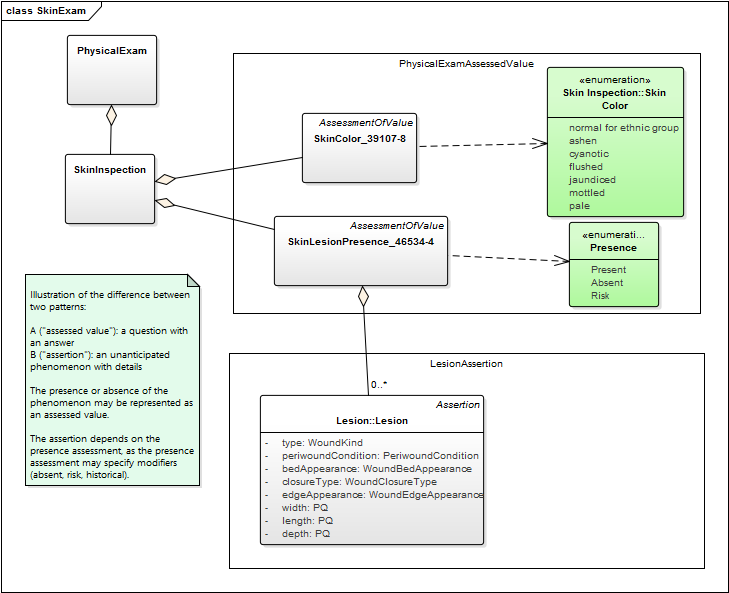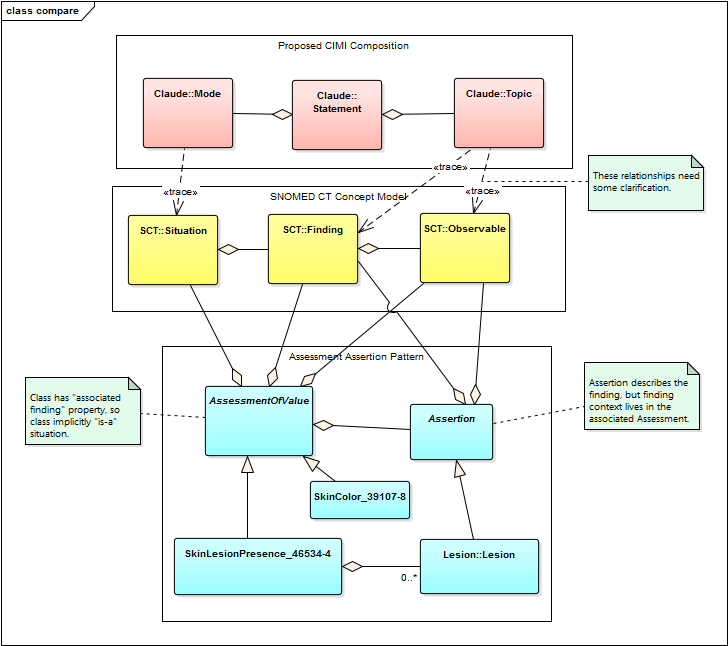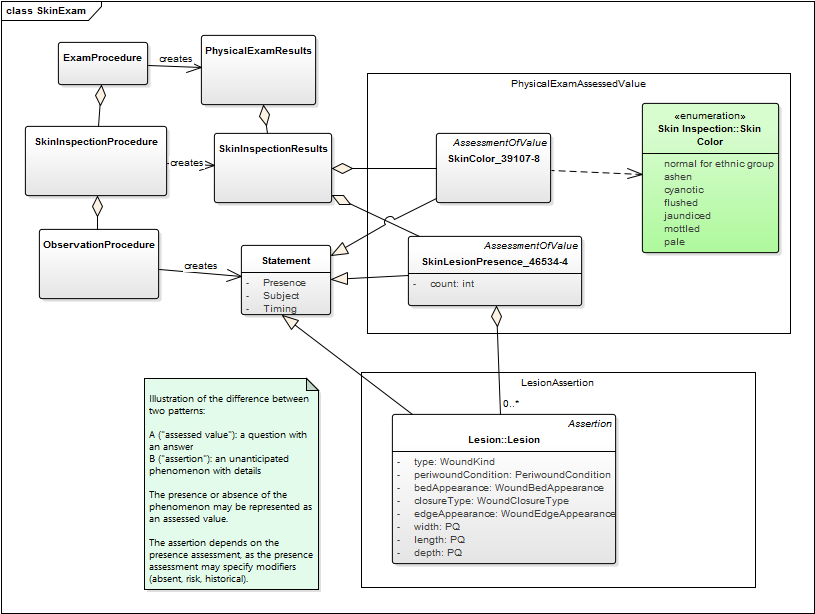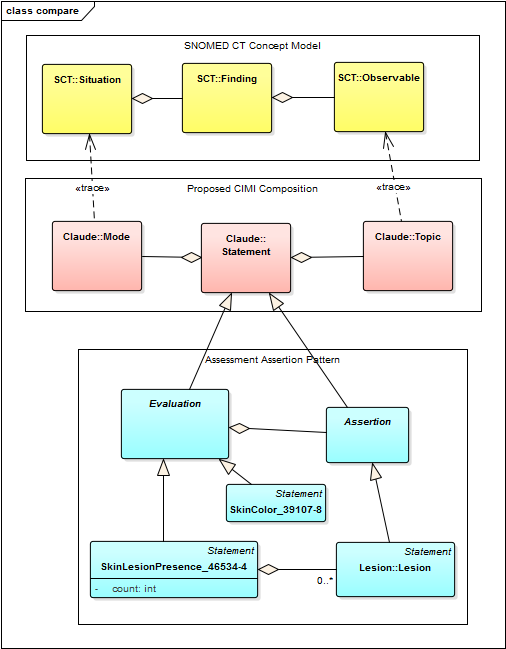This wiki has undergone a migration to Confluence found Here
2016-09-09 PC CIMI POC Call Minutes
Jump to navigation
Jump to search
Back to PC CIMI POC Minutes
Minutes Template
Meeting Information
| HL7 PC-CIMI-POC Meeting Minutes Location: Phone |
Date: 2016-09-09 Time: 10:00-11:00 ET | ||
| Facilitator | Jay Lyle | Note taker(s) | Jay Lyle |
| Attendee | Name | Affiliation
| |
| Richard Esmond | PenRad | ||
| Galen Mulrooney | JP Systems | ||
| y | Jay Lyle | JP Systems / VA | |
| Harold Solbrig | Mayo | ||
| y | Susan Matney | Intermountain | |
| Susan Campbell | Intermountain | ||
| Kurt Allen | Intermountain | ||
| Joey Coyle | Intermountain | ||
| Laura Heerman Langford | Intermountain | ||
| y | Gerard Frericks | Intermountain | |
| y | Rob McClure | Intermountain | |
Agenda
Agenda Topics
- classify patterns: assessed values (questions) & assertions
- assertion to depend on assessed value pattern, as assessed value carries context that may modify assertion (see diagram)
- Compare this pattern with SCT concept model analysis, Claude's composition proposal. How do we harmonize? (see diagram)
- Questions
- Do we have an assertion pattern for "wound" or "lesion" or both?
- CEM details: where is Value? Where are vocabularies?
- openEHR: can we distinguish "clinical description," "interpretation," and "comment"?
- review exam requirements
A proposal for relating Assessments (question/answer pattern) with Assertions.
High-level class relationships for harmonization.
Minutes
Minutes/Conclusions Reached:
- Sound quality on HL7 line forced movement to the web conference audio. Inconsistency of web audio access prompted removal to Skype audio.
- "Skin color" is semantically problematic, and should be addressed before we're done.
- We do NOT need to disentangle the physical phenomenon (wavelength, pantone, rbg) from judgment of probable clinical state. Human perception is sufficiently complex that this would be expensive, unlikely to be completed, and of limited use if it were. We are talking about a judgment.
- But it would be good for the LOINC text to clarify this.
- "Skin color" is semantically problematic, and should be addressed before we're done.
- Broad agreement on distinction between Assessment (now changed to Evaluation)--i.e., a question or observable with an observed value, or a name-value pair, and an Assertion, or an observation of an abnormal phenomenon for which no question is easily identified (e.g., disease, lesion).
- A suggestion that these two forms should be isosemantic. This is clear for some forms (hair color: brown & brown hair color); feasible if awkward for some (SBP: 120 & "120 SBP"); and difficult to see for some (?: diabetes & diabetes).
- Agreement that Assertions may support or be related to Evaluation questions, e.g., Presence of Wounds (or, count of wounds).
- Agreement on patterns congruent to SCT concept model. E.g.:
- cyanosis: skin color (observable), cyanosis (finding), present (situation)
- not cyanotic: skin color (observable), cyanosis (finding), absent (situation)
- no observation done: a procedure not performed. (observation might be null)
- Hence, added Statement class, analagous to Situation concept, to model.
- Next week in Baltimore.
- Open question: lab observation, following an Assessment pattern, may carry a value (finding) that is semantically the same as the finding context (present, absent). If present, there is no problem having it in two places. But what do we do with an absent finding?
- Proposal: repeat. Double negative is regrettable but semantics are emphatic, not inverse.
Updated images:
A proposal for relating Assessments (question/answer pattern) with Assertions.
High-level class relationships for harmonization.
Meeting Outcomes
Actions
|
Next Meeting/Preliminary Agenda Items
|
© 2012 Health Level Seven® International. All rights reserved.



